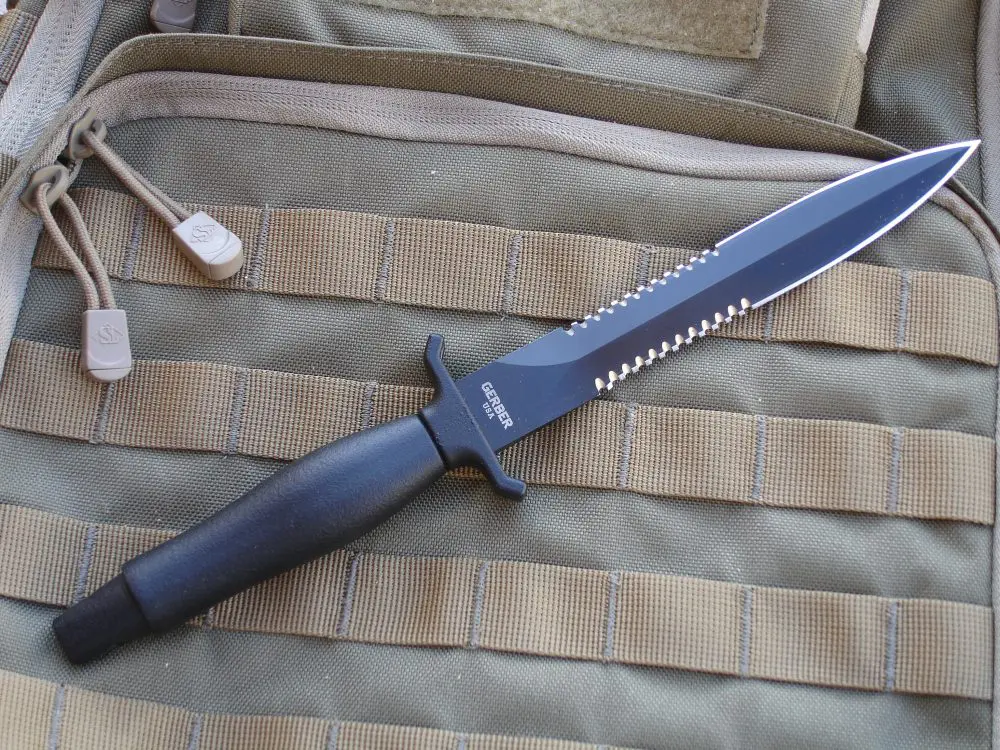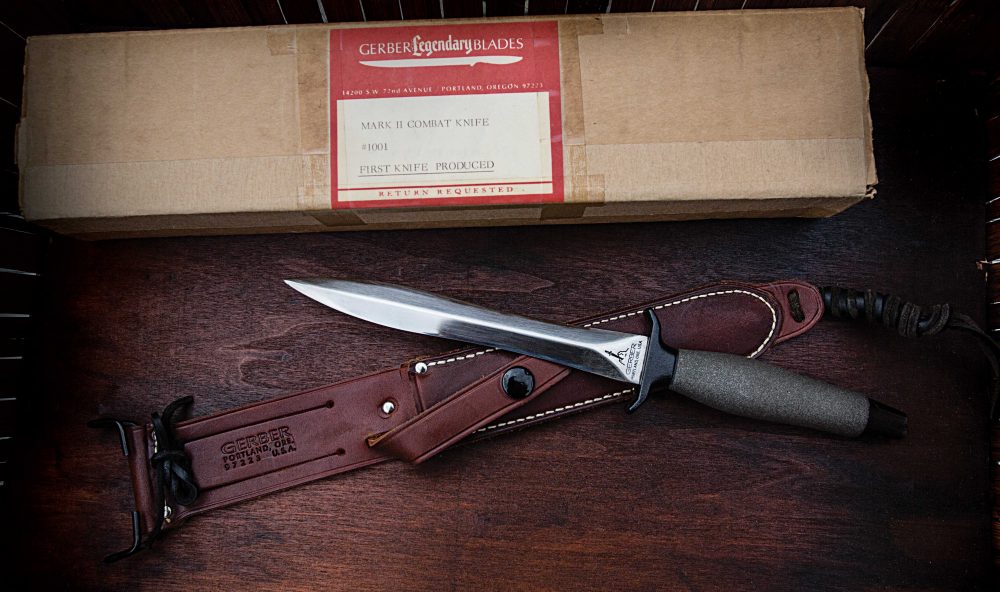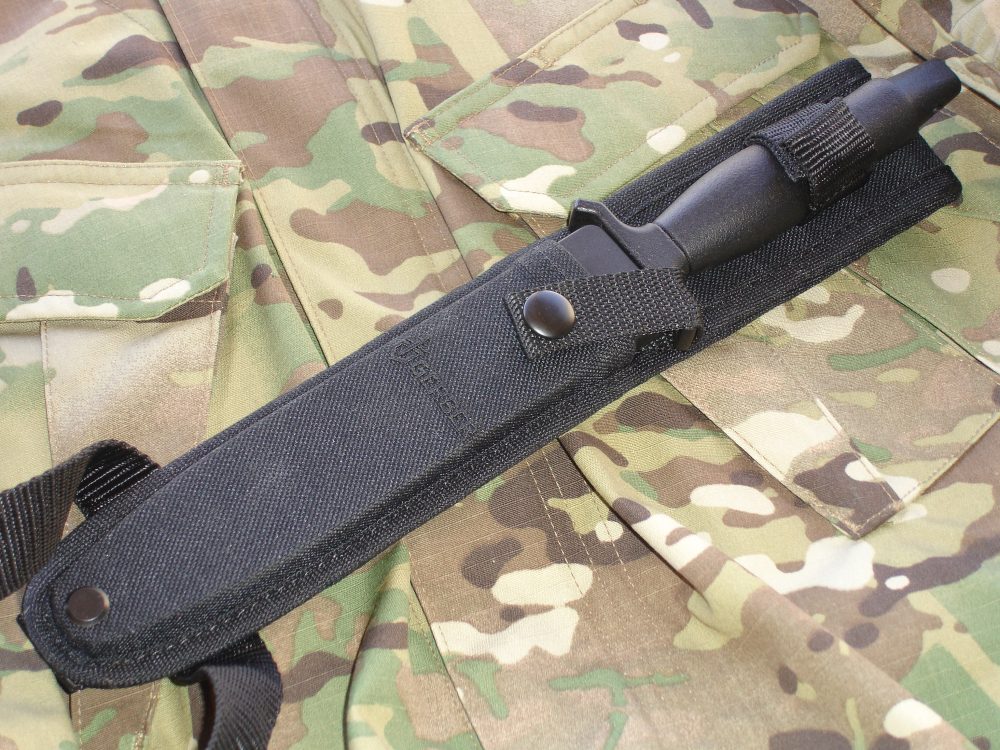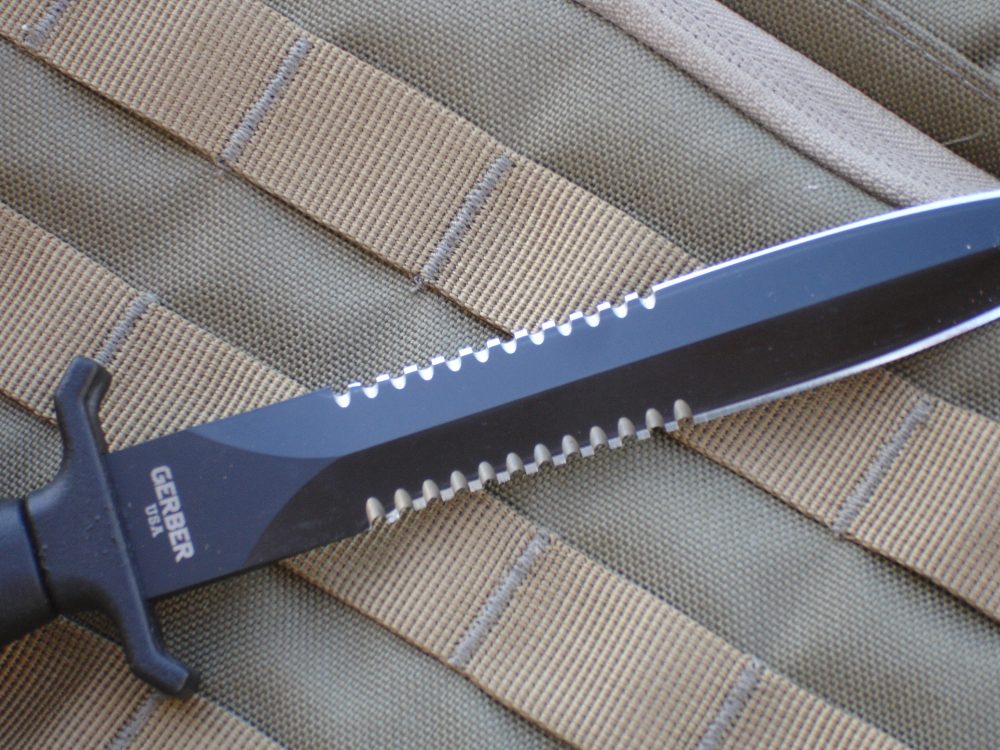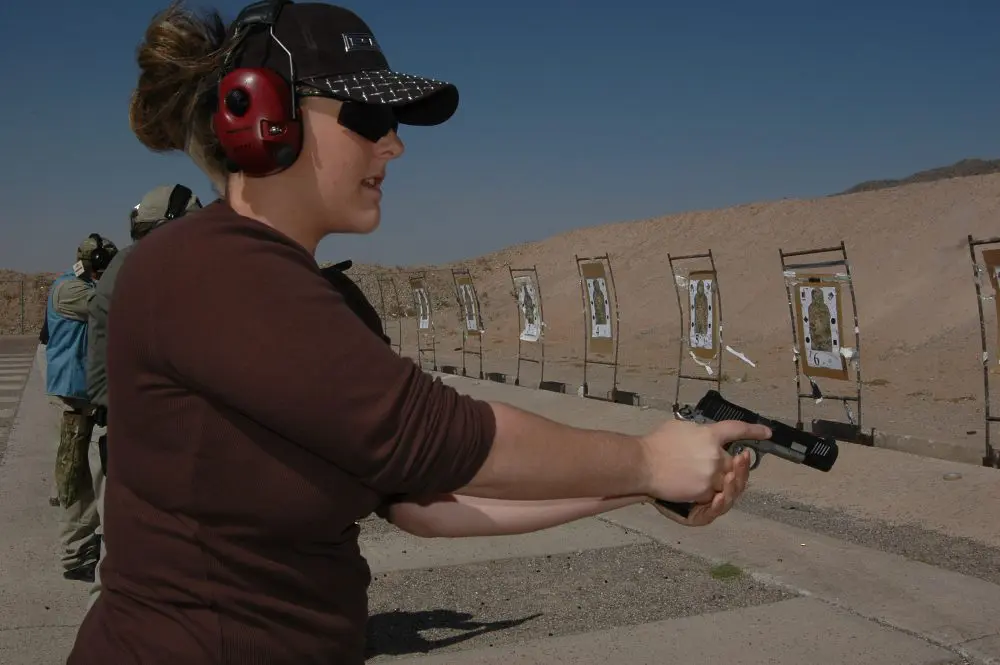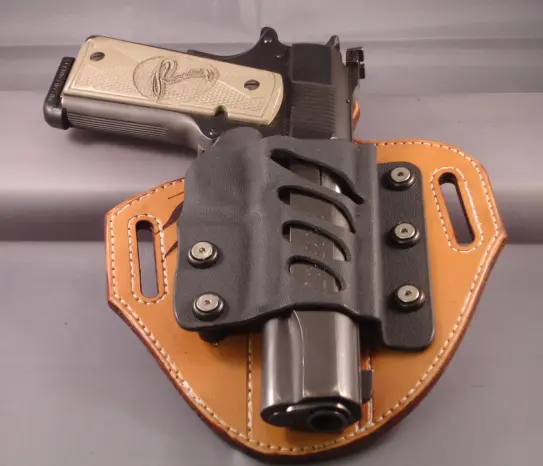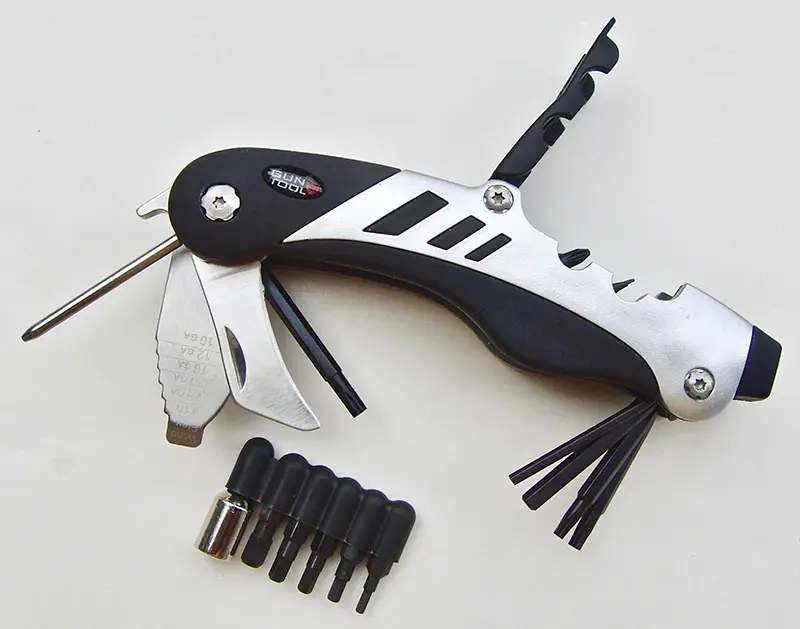The Gerber® Mark II™ was the iconic combat knife of the Vietnam War, just as the Fairbairn-Sykes (F-S) Fighting Knife (commonly known as the British Commando Knife) was the iconic combat knife of World War II. Like the F-S, the Mark II is a timeless classic. It is one of the best-selling knives of all time and continues to see action around the globe.
The Mark II was designed by retired U.S. Army Captain Clarence A. “Bud” Holzman, who served with the 101st Airborne Division (“Screaming Eagles”) in the European theater during WWII. Prototypes of the Mark II were field tested and evaluated at Fort Lewis, Washington by members of the Army’s Fourth Infantry Division.
Current production 2008 series Gerber Mark II. Introduced in 1966, Gerber Mark II has developed a mystique second only to the Fairbairn-Sykes Fighting Knife. Photo: Gerber
Although Captain Holzman reportedly based the blade profile of the Mark II on the Roman Mainz Gladius in the British Museum‘s collection, the similarities to the F-S Fighting Knife are unmistakable. Like the F-S, the Mark II has a slender double-edged spear-point blade and a distinctive foil-like handle.
Regarded as the father of modern hand-to-hand combat, Captain (later Lieutenant Colonel) W.E. Fairbairn’s rationale for the design of the F-S is laid out in his seminal book Get Tough! (1942):
“In close-quarters fighting, there is no more deadly weapon than the knife…. In choosing a knife, there are two important factors to bear in mind: balance and keenness. The hilt should fit easily in your hand, and the blade should not be so heavy that it tends to drag the hilt from your fingers in a loose grip. It is essential that the blade have a sharp stabbing point and good cutting edges, because an artery torn through (as against a clean cut) tends to contract and stop the bleeding. If a main artery is cleanly severed, the wounded man will quickly lose consciousness and die.”
First Gerber Mark II Combat Knife. Photographed exclusively for S.W.A.T. by Gerber.
The Mark II went into commercial production in late 1966. Production continued until 2000, with an additional limited production run of 1,500 knives in 2002. Full production resumed in 2008.
There have been many variations in the Mark II throughout the years of its production: changes in blade steel, blade profile, blade serration, handle material, and handle coating material and color. Fortunately for collectors, all Mark II knives are individually serialized, which makes dating easy.
The first production run of the Mark II was wasp-waisted and had a five-degree offset between the blade and the grip. The offset design was done so the knife could be kept closer to the body when sheathed and to compensate for the natural bend of the wrist when the knife is held in the “fencing foil grip.”
The canted blade led to a number of knives being returned for having “bent blades.” Gerber discontinued the cant in subsequent production runs. The wasp-waist was also later discontinued.
Current Gerber Mark II sheath. Variety of sheaths have been associated with the Mark II: first leather and later Black Cordura ballistic nylon.
Serrations were added to the Mark II in the 1970s. Al Mar, who was working for Gerber at the time, added two inches of scalloped saw-tooth double serrations toward the hilt. According to some sources, this was done to make the knife more politically correct, while others say they were added due to suggestions from the field.
A serrated edge essentially cuts by tearing rather than slicing. This makes it much more efficient when cutting through fibrous or flexible materials such as rope. It also cuts better than a plain edge when dull. A major disadvantage of most serrated blades is that they are difficult to sharpen, requiring a special sharpening tool.
When Gerber reintroduced the Mark II in 2008, the serrations were changed from the scalloped saw teeth to flat chisel-shaped teeth ground on the same plane as the blade edge. This lets them be sharpened at the same time as the blade and makes sharpening a breeze.
Double serrations were added to Gerber Mark II in the 1970s. When Gerber reintroduced Mark II in 2008, serrations were changed from scalloped saw teeth to flat chisel shaped.
The 2008 version has a die-cast aluminum handle with a textured black powder-coat finish and a 420HC stainless steel double-edge, straight-waist blade that is black oxide coated. The blade has a zero-degree cant. Blade length is 6.5 inches, thickness is .235 inch and width is .875 inch. Overall length is 12.75 inches and weight is 8.0 ounces.
Commercial knife makers like 420HC, and it’s a good choice when ease of sharpening and toughness are important. It can be sharpened to a very fine cutting edge and has excellent corrosion resistance.
Although a variety of handle materials have been employed for the Mark II, the majority are die-cast aluminum. The handle on the 2008 version is a one-piece solid aluminum alloy A380 casting that includes the guard, grip and pommel as a single piece.
The handle on the Mark II is 5.25 inches long and has a flattened oval cross-section and tapered palm-swell design. Other handle features are an angled-forward double guard and tapered pommel with lanyard hole. The pommel was designed to be an effective “Judo Stick.” The handle ergonomics of the Mark II are generally considered superior to those of the F-S Fighting Knife.
Members of U.S. Navy SEAL Team One move down Bassac River in SEAL Team Assault Boat during operations south of Saigon in 1967. Gerber Mark II was the iconic fighting knife of the Vietnam War and highly coveted. Photo: JO1 J.D. Randal, U.S. Navy.
The Mark II has outstanding balance and is lively in the hand, important characteristics for a knife of this type. As is the case with the F-S, the Mark II is a purpose-built combat dagger with excellent penetration and reach.
A surprising variety of sheaths have been associated with the Mark II. The first sheaths were leather. Black Cordura® ballistic nylon sheaths were introduced around 1985. The 2008 version Cordura sheath is fully jumpable and has a black polymer injection-molded liner and two nylon straps with snap closure for primary and secondary retention to secure the handle. Designed for maximum versatility, the sheath features a multi-mount system with belt loop, nylon webbing leg strap with side-release buckle, belt loops, and is MOLLE/PALS compatible.
The Gerber Mark II (Item #22-01874) has a suggested retail price of $133. It is made in Portland, Oregon and comes with a full lifetime warranty in North America and a 25-year warranty anywhere else.
The Mark II is a true classic that belongs in every knife collection.
Eugene Nielsen’s background includes protective intelligence/investigations and threat management, as well as red teaming/security consulting. He is a Licensed Private Investigator in both California and Arizona. He has written almost to 1,000 articles.
SOURCE
GERBER GEAR
(800) 950-6161
www.gerbergear.com
